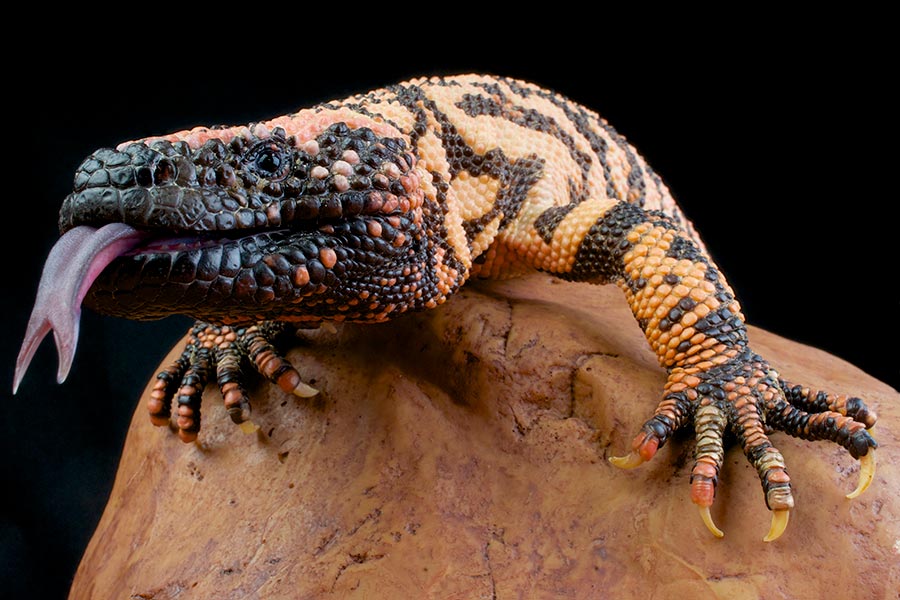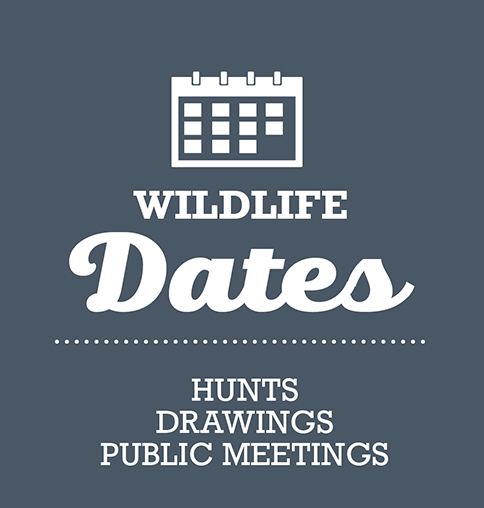≡
Search results for "heteromyidae"
Dark Kangaroo Mouse (Microdipodops megacephalus)
» Animals (Animalia) › Vertebrates (Craniata) › Mammals (Mammalia) › Rodents (Rodentia) › Pocket Mice / Kangaroo Rats (Heteromyidae) › Dark Kangaroo Mouse (Microdipodops megacephalus)
...Search by word or phrase
Search by hierarchy
Plants (Plantae)
Multicellular organisms that are autotrophic or make complex carbohydrates from basic constituents. Most use photosynthesis.
Flowering Plants (Anthophyta)
Flowering plants that produce seeds enclosed in an ovary
Dicots (Dicotyledoneae)
Parsley / Ginseng (Apiales)
Parsley/Carrot Family (Apiaceae)
Aster/Sunflowers (Asterales)
Aster/Sunflowers (Asteraceae)
La Sal Mountains' Groundsel (Senecio inexpectatus)
La Sal Daisy (Erigeron mancus)
Sigurd Easter Daisy (Townsendia jonesii var. lutea)
Garrett's Fleabane (Erigeron garrettii)
Barneby's Rockaster (Herrickia kingii var. barnebyana)
Musinea Groundsel (Packera musiniensis)
Entrada Skeletonplant (Lygodesmia grandiflora var. entrada)
Joanna's thistle (Cirsium joannae)
Alcove Rock-daisy (Laphamia specicola)
Last Chance Townsendia (Townsendia aprica)
Rock Hymenoxys (Hymenoxys lapidicola)
Jones Golden-aster (Heterotheca jonesii)
Untermann's Daisy (Erigeron untermannii)
Cronquist Daisy (Erigeron cronquistii)
Mustards/Capers (Capparales)
Mustards (Brassicaceae)
Creeping Draba (Draba sobolifera)
Frisco Mountains mustard (Terraria haydenii)
Kodachrome Bladderpod (Physaria tumulosa)
Schell Creek draba (Draba pennellii)
Clay Reed-mustard (Hesperidanthus argillaceus)
Barneby's Reed-Mustard (Hesperidanthus barnebyi)
Grouse Creek Rockcress (Boechera falcatoria)
Shrubby Reed-mustard (Hesperidanthus suffrutescens)
Snowbasin Rockcress (Boechera glareosa)
Maguire's Whitlow-grass (Draba maguirei ssp. maguirei)
Garrett Bladderpod (Lesquerella garrettii)
Mount Belknap Draba (Draba ramulosa)
Barneby Ridgecress (Lepidium barnebyanum)
Burke's Whitlow-grass (Draba burkei)
Uinta Mountains draba (Draba inexpectata)
Capparaceae
Caryophyllales (Caryophyllales)
Cactus (Cactaceae)
Winkler's Pincushion Cactus (Pediocactus winkleri)
Pariette Cactus (Sclerocactus brevispinus)
Despain Pincushion Cactus (Pediocactus despainii)
Uinta Basin Hookless Cactus (Sclerocactus wetlandicus)
Purslane Family (Portulacaceae)
Chenopodiaceae
Cacaceae
Peas (Fabales)
Pea Family (Fabaceae)
Barneby's Aromatic Scurf-pea (Pediomelum aromaticum var. barnebyi)
Kane Breadroot (Pediomelum megalanthum var. epipsilum)
Gumbo Milkvetch (Astragalus ampullarius)
Avon Milkvetch (Astragalus praelongus var. avonensis)
Ann Kelsey’s milkvetch (Astragalus kelseyae)
Hamilton's Milkvetch (Astragalus hamiltonii)
Navajo Lake Milkvetch (Astragalus limnocharis var. limnocharis)
Rollin's Sweetvetch (Hedysarum boreale var. gremiale)
Deseret Milkvetch (Astragalus desereticus)
Shivwits Milkvetch (Astragalus ampullarioides)
Table Cliff Milkvetch (Astragalus limnocharis var. tabulaeus)
Cisco Milkvetch (Astragalus sabulosus)
Pohl's Milkvetch (Astragalus lentiginosus var. pohlii)
Cronquist Milkvetch (Astragalus cronquistii)
Stage Station Milkvetch (Astragalus vehiculus)
Goose Creek Milkvetch (Astragalus anserinus)
Horseshoe Milkvetch (Astragalus equisolensis)
Isely's Milkvetch (Astragalus iselyi)
Mesic Milkvetch (Astragalus diversifolius)
Paradox Milkvetch (Astragalus holmgreniorum)
Heliotrope Milkvetch (Astragalus montii)
Tuhy Aromatic Scurf-pea (Pediomelum aromaticum var. tuhyi)
Dogbane / Gentian / Milkweed (Gentianales)
Dogbanes (Apocynaceae)
Gentians (Gentianaceae)
Milkweeds (Asclepiadaceae)
Borage / Mint / Verbena (Lamiales)
Borage Family (Boraginaceae)
Mallow (Malvales)
Mallow Family (Malvaceae)
Evening-primrose / Loosestrife (Myrtales)
Evening-primrose Family (Onagraceae)
Fumary / Poppy (Papaverales)
Fumary family (Fumariaceae)
Poppy Family (Papaveraceae)
Buckwheats (Polygonales)
Buckwheat Family (Polygonaceae)
Scarlet Buckwheat (Eriogonum microtheca var. phoeniceum)
Comb Wash Wild Buckwheat (Eriogonum clavellatum)
Gate Canyon Buckwheat (Eriogonum hylophilum)
Lost Creek Buckwheat (Eriogonum mitophyllum)
Frisco Buckwheat (Eriogonum soredium)
Ibex Buckwheat (Eriogonum ammophilum)
Smith's Buckwheat (Eriogonum smithii)
Primroses (Primulales)
Primrose Family (Primulaceae)
Barberry / Buttercup (Ranunculales)
Buttercup Family (Ranunculaceae)
Buckthorn / Grapes (Rhamnales)
Buckthorn Family (Rhamnaceae)
Rosales (Rosales)
Rose Family (Rosaceae)
Scrophulariales (Scrophulariales)
Figwort Family (Scrophulariaceae)
Firleaf Beardtongue (Penstemon abietinus)
Graham's Beardtongue (Penstemon grahamii)
White River Beardtongue (Penstemon albifluvis)
Bear River Range Beardtongue (Penstemon compactus)
Idaho Penstemon (Penstemon idahoensis)
Goodrich Penstemon (Penstemon goodrichii)
Gibben's Beardtongue (Penstemon gibbensii)
Stemless Beardtongue (Penstemon acaulis)
Canaan Mountain Beardtongue (Penstemon ammophilus)
Ben's Beardtongue (Penstemon franklinii)
Pinyon Penstemon (Penstemon pinorum)
Broomrape Family (Orobanchaceae)
Solanales (Solanales)
Waterleaf Family (Hydrophyllaceae)
Violales (Violales)
Blazingstar / Stickleaf Family (Loasaceae)
Arapien Stick-leaf (Mentzelia argillosa)
Goodrich's Blazingstar (Mentzelia goodrichii)
Horse Canyon Stickleaf (Mentzelia librina)
Violets (Violaceae)
Monocots (Monocotyledoneae)
Grasses/Sedges (Cyperales)
Sedges (Cyperaceae)
Lilies (Liliales)
Lillies (Liliaceae)
Orchids (Orchidales)
Orchids (Orchidaceae)
Animals (Animalia)
Multicellular organisms that develop from the fertilization of an egg by a sperm. Heterotrophic - obtain food by ingestion.
Vertebrates (Craniata)
Have skulls and backbones.
Turtles (Chelonia)
Testudines
Tortoises (Testudinidae)
Reptiles (Reptilia)
Cold blooded, lay eggs on land
Lizards / Snakes (Squamata)
Helodermatidae
Vipers (Viperidae)
Colubrid Snakes (Colubridae)
Amphibians (Amphibia)
Cold blooded, moist skin
Frogs / Toads (Anura)
True Frogs (Ranidae)
True Toads (Bufonidae)
Birds (Aves)
Have feathers and lay eggs
Hawks / Kites / Eagles (Accipitriformes)
Hawks / Kites / Eagles (Accipitridae)
Vultures / Condors (Cathartiformes)
Vultures / Condors (Cathartidae)
Shorebirds (Charadriiformes)
Sandpipers (Scolopacidae)
Avocets (Recurvirostridae)
Plovers (Charadriidae)
Cuckoos (Cuculiformes)
Cuckoos (Cuculidae)
Upland Game Birds (Galliformes)
Upland Game Birds (Phasianidae)
Songbirds (Passeriformes)
Flycatchers (Tyrannidae)
Finches (Fringillidae)
New World Sparrows (Passerellidae)
Thrashers / Mockingbirds / Catbirds (Mimidae)
Jays / Crows / Magpies (Corvidae)
Pelicans / Herons / Bitterns / Ibises (Pelecaniformes)
Ibises (Threskiornithidae)
Pelicans (Pelecanidae)
Woodpeckers (Piciformes)
Woodpeckers (Picidae)
Owls (Strigiformes)
Mammals (Mammalia)
Have hair, feed young milk, warm blooded.
Carnivores (Carnivora)
Weasels (Mustelidae)
Wolves / Coyotes / Foxes (Canidae)
Bats (Chiroptera)
Bats (Vespertilionidae)
Rabbits / Hares (Lagomorpha)
Pikas (Ochotonidae)
Rabbits (Leporidae)
Rodents (Rodentia)
Squirrels (Sciuridae)
Pocket Mice / Kangaroo Rats (Heteromyidae)
Fish (Actinopterygii)
Use gills to breathe
Minnows / Suckers (Cypriniformes)
Suckers (Catostomidae)
Desert Sucker (Pantosteus clarkii)
Flannelmouth Sucker (Catostomus latipinnis)
June Sucker (Chasmistes liorus)
Razorback Sucker (Xyrauchen texanus)
Leuciscidae
Perch / Sticklebacks (Perciformes)
Sculpins (Cottidae)
Salmon / Trout (Salmoniformes)
Arthropods (Arthropoda)
Invertebrates with an exoskeleton, jointed appendages, and segmented bodies
Insects (Insecta)
Animals having 3 pair of legs, 3 body sections, generally 1 or 2 pair of wings, 1 pair of antennae.
Beetles (Coleoptera)
True Flies (Diptera)
Ephydridae
Sawflies / Wasps / Bees / Ants (Hymenoptera)
Bees (Apidae)
American Bumble Bee (Bombus pensylvanicus)
Suckley's Cuckoo Bumble Bee (Bombus suckleyi)
Andrenidae
Butterflies / Moths (Lepidoptera)
Orange-tip / White / Sulphur Butterflies (Pieridae)
Brush-footed Butterflies (Nymphalidae)
Nokomis/Silverspot Butterfly (Speyeria nokomis nokomis)
West Coast Lady Butterfly (Vanessa annabella)
Gossamerwing / Hairstreak Butterflies (Lycaenidae)
Grasshoppers (Orthoptera)
Camel Crickets (Rhaphidophoridae)
Stoneflies (Plecoptera)
Green Stoneflies (Chloroperlidae)
Giant Stoneflies (Pteronarcyidae)
Mollusks (Mollusca)
Soft bodied animals with an internal or external shell and a toothed tongue or radula. Have a mantle that lines and secretes the shell and a muscular foot that allows for movement.
Mussels / Clams (Bivalvia)
Two hinged lateral shells and a wedged shaped "foot". Bivalves lack tentacles and a head.
Mussels (Unionoida)
Unionid Mussels (Unionidae)
Margaritiferid Mussels (Margaritiferidae)
Snails / Slugs (Gastropoda)
Usually have chambered shells.
Aquatic Snails (Basommatophora)
Physas (Physidae)
Sprites / Gyros / Rams-horns (Planorbidae)
Fossarias / Pondsnails / Lanxs (Lymnaeidae)
Littorinimorpha
Amnicolas / Duskysnails (Hydrobiidae)
Hamlin Valley Pyrg (Pyrgulopsis hamlinensis)
Longitudinal Gland Pyrg (Pyrgulopsis anguina)
Bear Lake Springsnail (Pyrgulopsis pilsbryana)
Sub-globose Snake Pyrg (Pyrgulopsis saxatilis)
Santa Clara Pyrg (Pyrgulopsis santaclarensis)
Bifid Duct Pyrg (Pyrgulopsis peculiaris)
Black Canyon Pyrg (Pyrgulopsis plicata)
Carinate Glenwood Pyrg (Pyrgulopsis inopinata)
Nuwuvi Pyrg (Pyrgulopsis nuwuvi)
Smooth Glenwood Pyrg (Pyrgulopsis chamberlini)
Pine Grove Pyrg (Pyrgulopsis pinetorum)
Desert Springsnail (Pyrgulopsis deserta)
Lindahl's Pyrg (Pyrgulopsis lindahlae)










